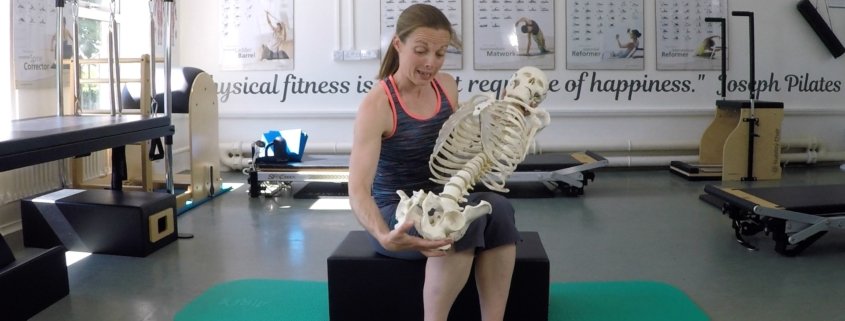Pelvic Floor Exercises, A Bit Like Housework
Pelvic floor exercises: not so glamorous, nobody notices except you when you’ve done them, you can’t just do them once in a while and there’s always something better to do. But WAY, WAY more important than housework!
It’s a long one this week so put the kettle on and give yourself a clear 20 minutes to sit down, relax, read and listen. Which is kind of the essence of this blog…finding and giving yourself time every day to focus on yourself and the super muscles of the pelvic floor.
Here’s what we’re going to cover:
- Pelvic Floor
Where are our pelvic floor muscles and what do they do? Why do we need to strengthen them? How can we effectively and consistently strengthen the pelvic floor? - Posture
What is postural alignment? Why is it healthy to achieve good postural alignment? How can we improve our posture? - Pilates
How can the principles of pilates, applied to simple exercises and to daily activities improve the health of our pelvic floor and our posture?
Crikey, so many questions but this is a favourite subject of mine for reasons I’ll explain later so let’s get cracking. I want you to go away with a better understanding of your pelvic floor muscles, how to strengthen them, how our posture plays an important role in our pelvic and overall health and most of all I want you to leave feeling confident that you understand why and how we should strengthen our deep abdominal muscles.
It’s easier to explain the muscles of the core and the pelvic floor in person…
And here I go into the muscles of the pelvic floor in a little more detail…
Here comes the problem…they can be injured through pregnancy, childbirth or surgery and weakened through aging and weight gain. Once weakened, urinary stress incontinence, better known as wetting our pants, may occur whenever pressure increases or impact occurs, for example during coughing, sneezing, lifting, running and jumping.
Pelvic organ prolapse and stress incontinence affects 1 in 3 women but even though it’s common, what’s normal is the two thirds of women not affected. I want to be one of the 2 in 3.
We’re going to look at improving your posture and improving the function of your pelvic floor in a two way plan to minimise wetting our pants when we run/cough/lift etc.
With poor posture there is undue stress and strain on the bones joints, ligaments and muscles. Muscle weakness allows separation of the parts to which the muscle is attached. The position of the pelvis is key to improving posture. Again, easier to explain in person…
So now we know where the pelvic floor muscles are and we know how to position our pelvis in such a way that the muscles surrounding it do the best job they can. Now we’ll add the principles of pilates in order to activate the deep pelvic floor muscles and another amazing muscle, the transversus abdominis.
There is close association between the pelvic floor muscles (PF from now on!) and the transversus abdominis (TA) and there is evidence that contraction of the PF can be used to facilitate contraction of the TA and vice versa.
Although the activation of the PF was not specifically emphasised by the original work of Joseph Pilates, STOTT Pilates have integrated targeting the PF into every single exercise. And I’m going with their approach because my pelvic floor muscles took a right hammering during each of my two ‘straightforward’ vaginal births.
Before I leave you with my 50 a day pelvic floor exercises I’ll explain why I get up on my soapbox every so often about this subject. It’s totally crap to wet your pants as a grown up. It destroys your confidence, affects your personal life, your hobbies, your mind and your body. And if there’s something that can be done about it then I’m going to do it and I’m going to try and reach out to other women (and men) who are in that 1 in 3 group.
After my second baby I took the approach of ‘things will just go back to normal, right?’ Hmm, 4 years on and I was still not running. This is a good time to say that my pelvic floor weakness meant that running caused wet pants so really in the grand scheme of things I was ok, I didn’t feel like it was bad enough to seek medical advice. I SHOULD HAVE SEEN A WOMEN’S HEALTH PHYSIOTHERAPIST. I didn’t even know this role existed!
When I eventually got around to ticking off ‘sort out pelvic floor’ on my to-do list it turns out that I wasn’t paying these muscles, or myself, anywhere near enough attention. So with advice from Baz Moffat, women’s health fitness professional and a women’s health physio I’m now getting stronger each day. I have returned to running and I now have dry pants, most of the time. We need to be in it for the long haul and do our pelvic floor exercises daily, so let’s get lifting!
This blog has been designed to present information about our deep pelvic floor and postural muscles, how we can strengthen these vital muscles and how we deserve to feel confident and 100% in control of this area. It is not intended as a substitute for consultation with your GP or women’s health physio. Thanks for joining me x
Reference List
Pilates Anatomy. Rael Isacowitz and Karen Clippenger. Human Kinetics 2011.
Pilates’ Return to Life Through Pilates. Joseph H. Pilates and William John Miller. Presentation
Dynamics 1992.
Clinically Oriented Anatomy, 3rd Edition. Keith L. Moore. Williams and Wilkins 1992.
STOTT PILATES Mat and Reformer Support Materials.
STOTT PILATES Injury and Special Populations Course Materials.
www.cps.org.uk
www.thepelvicexpert.com
www.squeezyapp.co.uk




Leave a Reply
Want to join the discussion?Feel free to contribute!